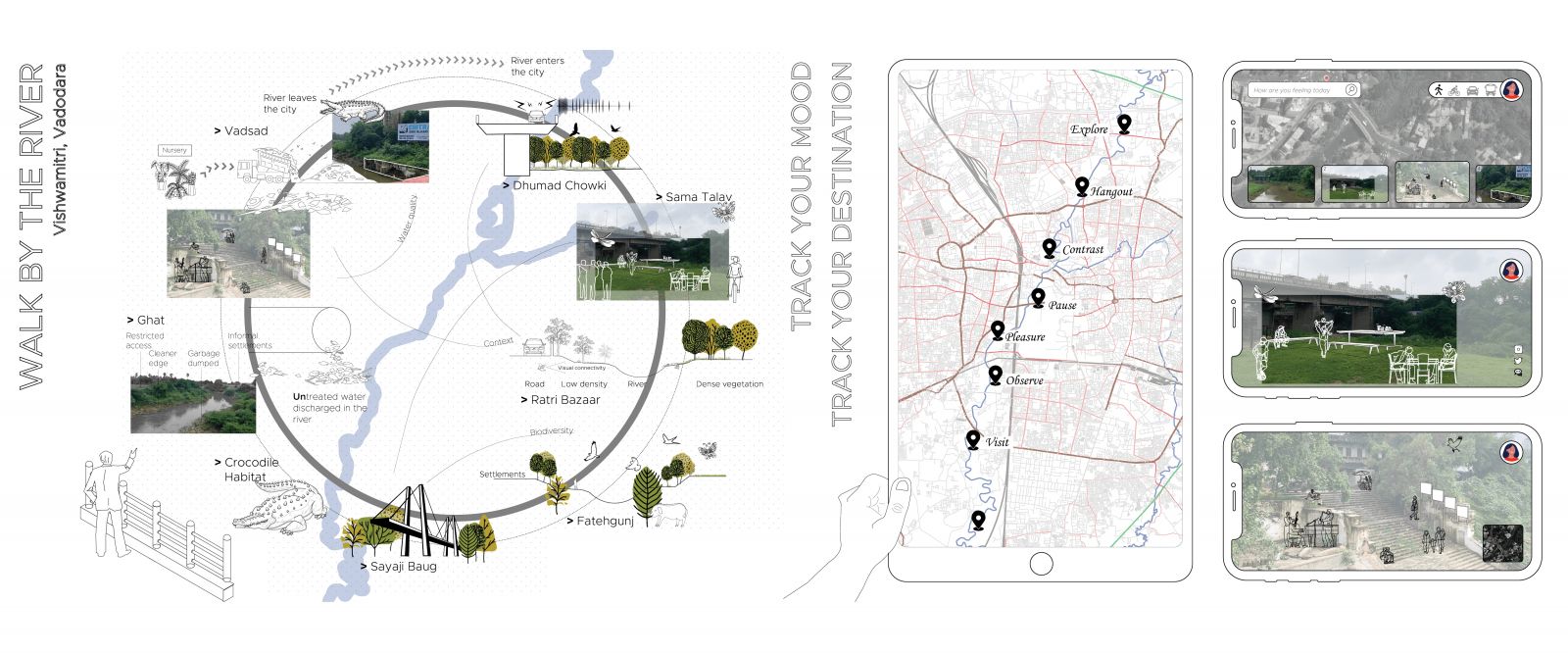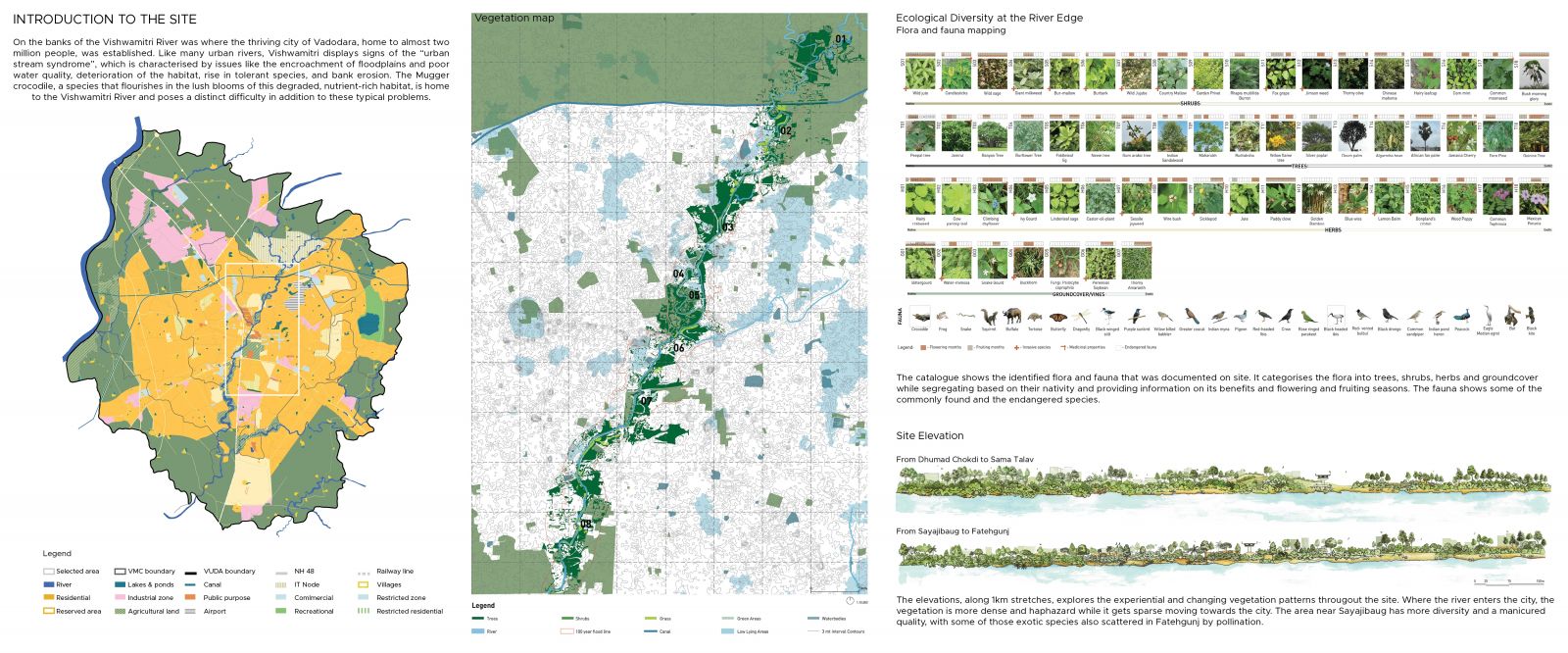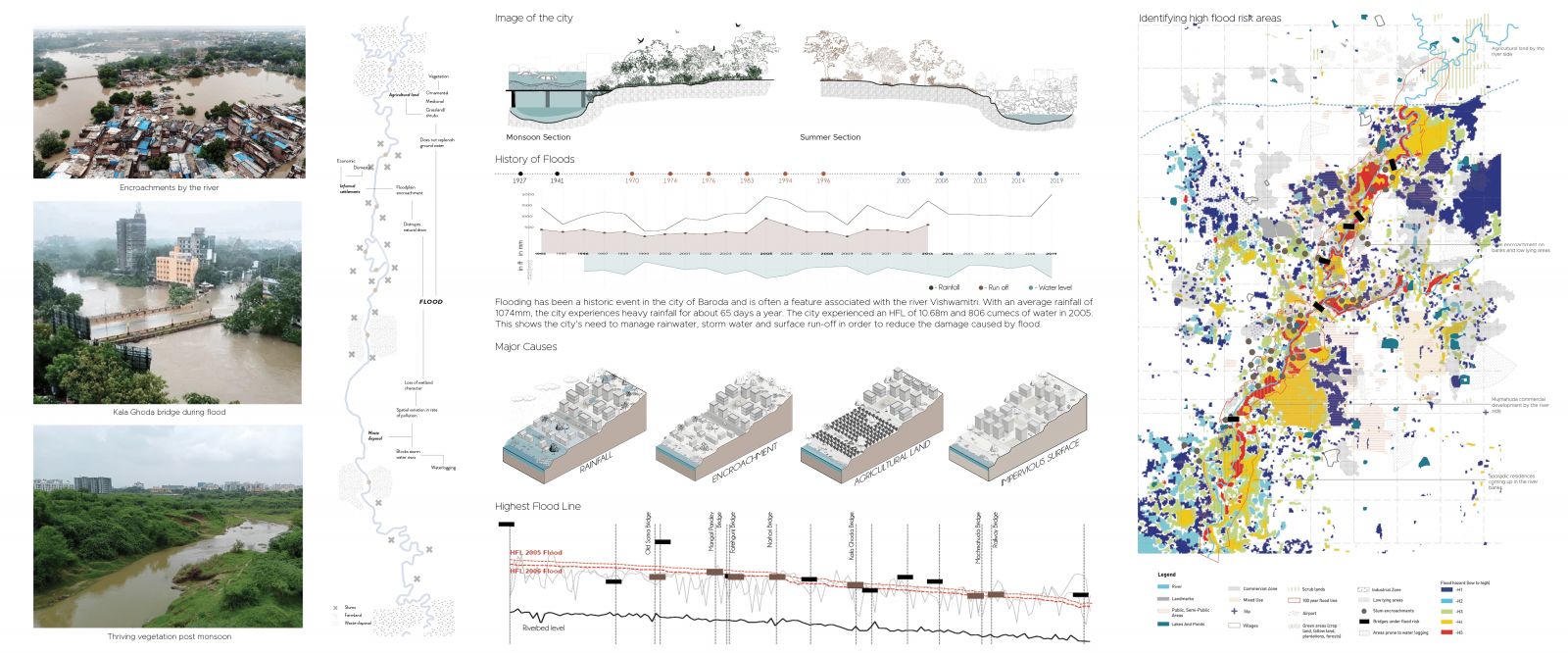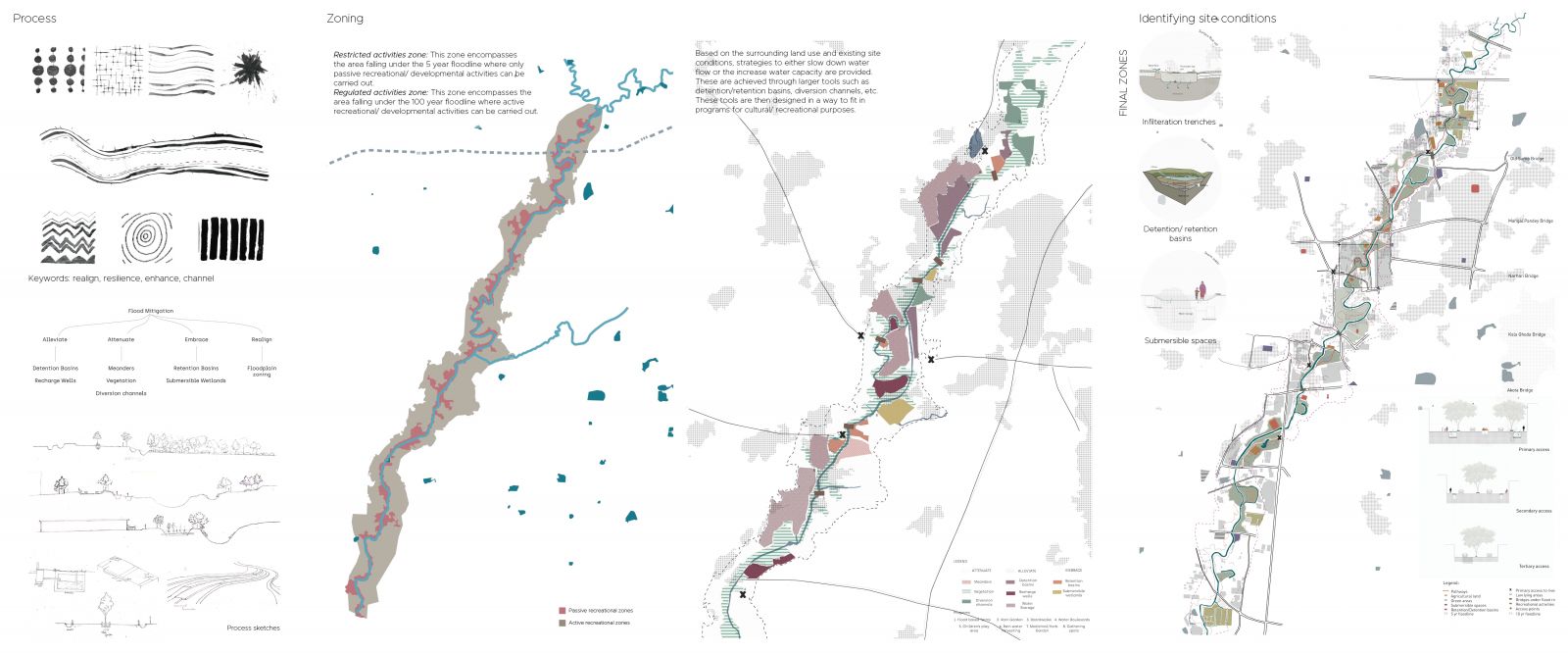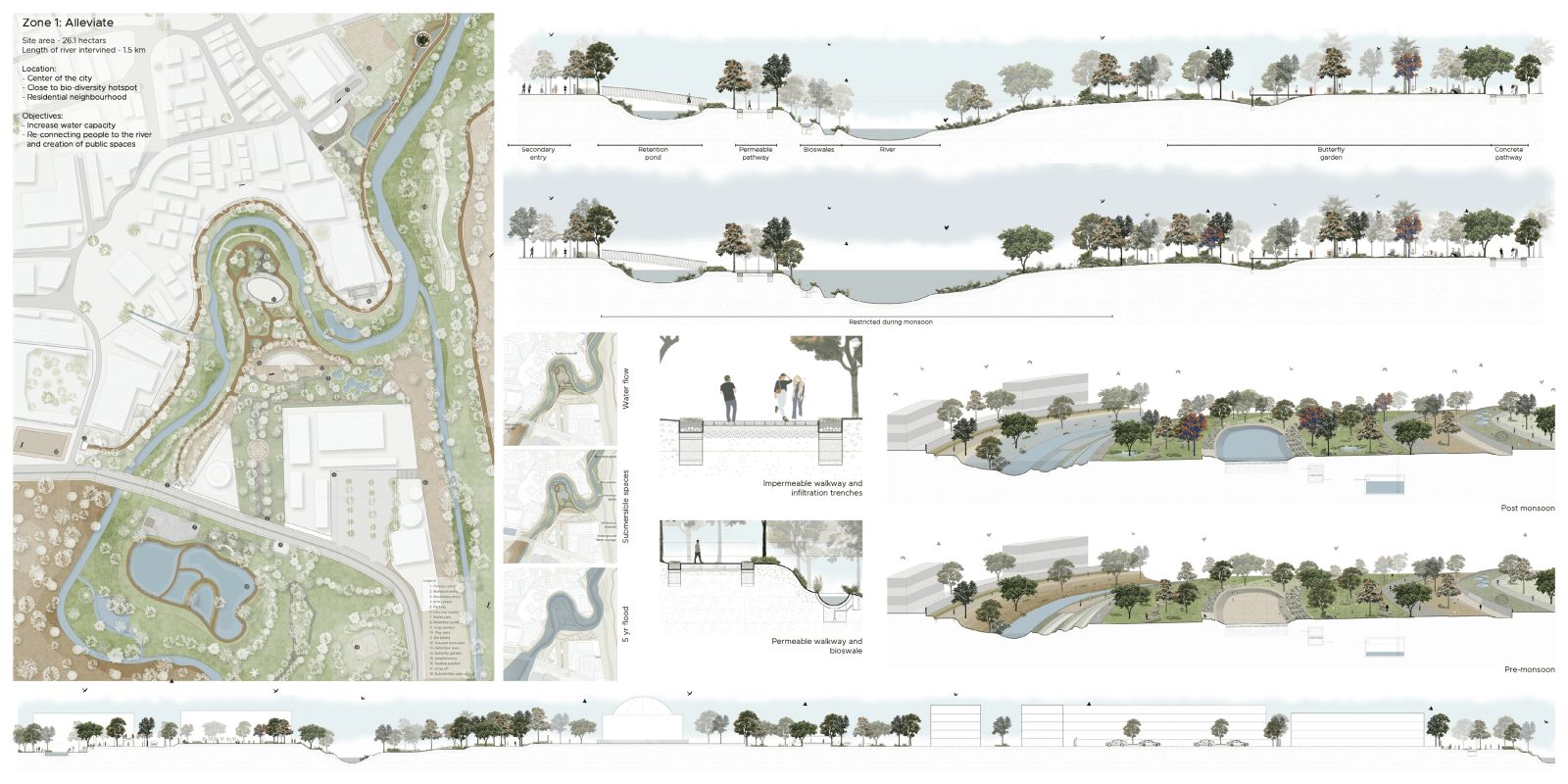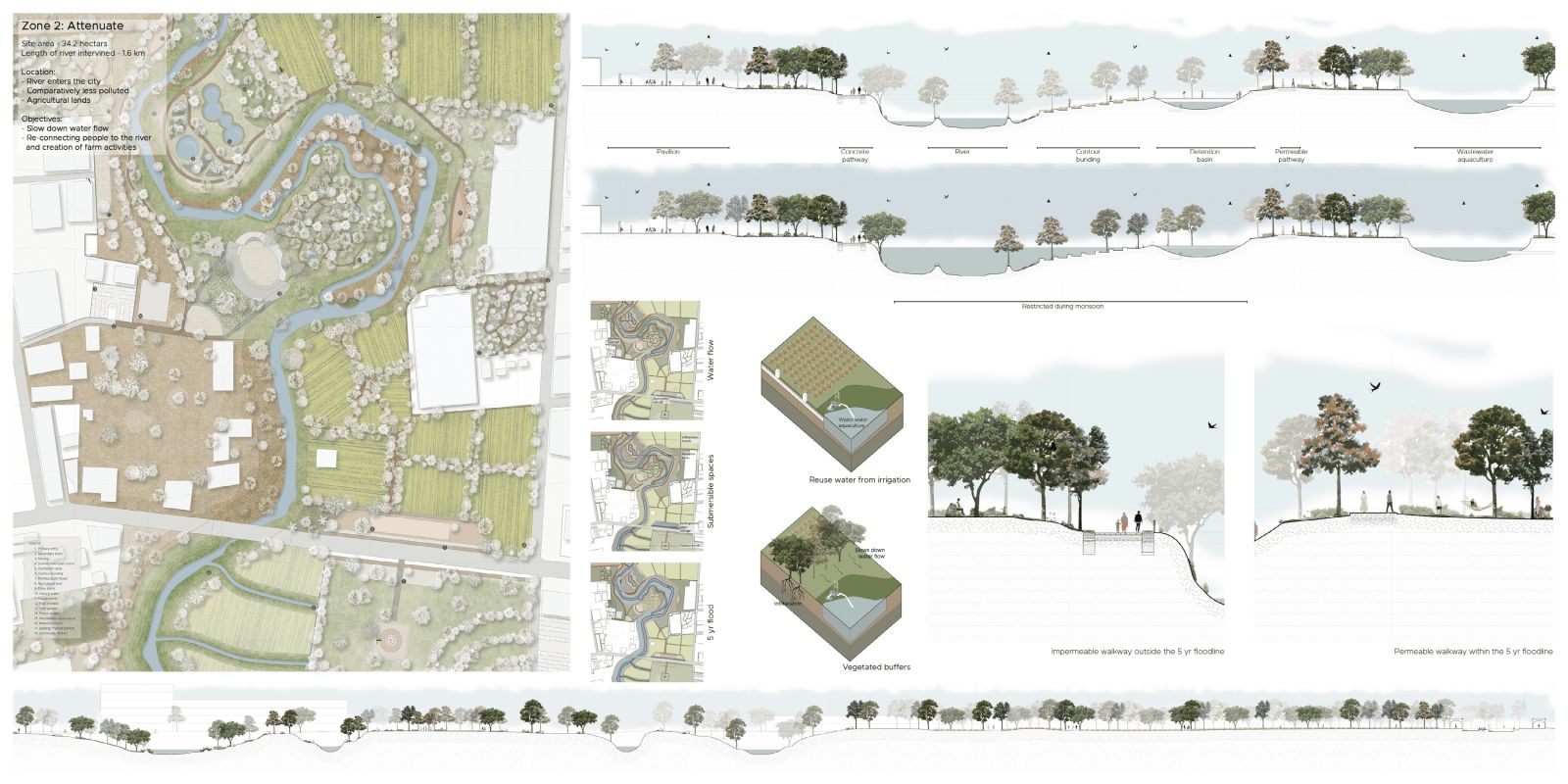Your browser is out-of-date!
For a richer surfing experience on our website, please update your browser. Update my browser now!
For a richer surfing experience on our website, please update your browser. Update my browser now!
Flooding has been a historic event in the city of Baroda and is often a feature associated with the river Vishwamitri.The design imagines incorporating flood as an essential element of the city’s landscape. The project uses this dynamic and site-specific condition of fluctuating water levels to create opportunities for flexible and submersible landscapes by supporting the flood water.The design focuses on retrofitting three broad strategies- alleviate, attenuate and embrace to manage flood risk and create flood adaptive environments. These three spatial tactics are further broken down into larger tools that help the urban and natural environment to adapt to flooding and reduce its impact.
View Additional Work